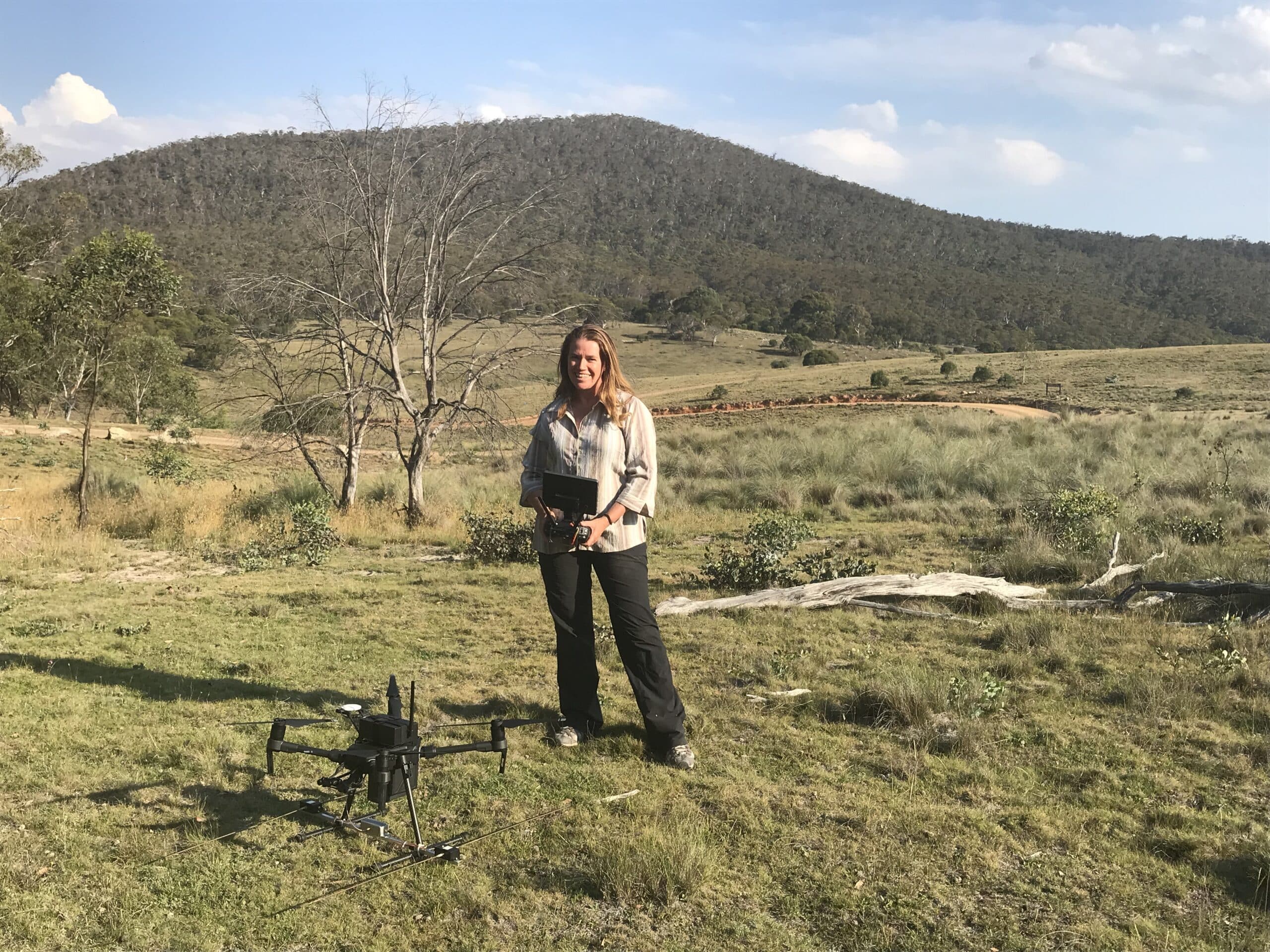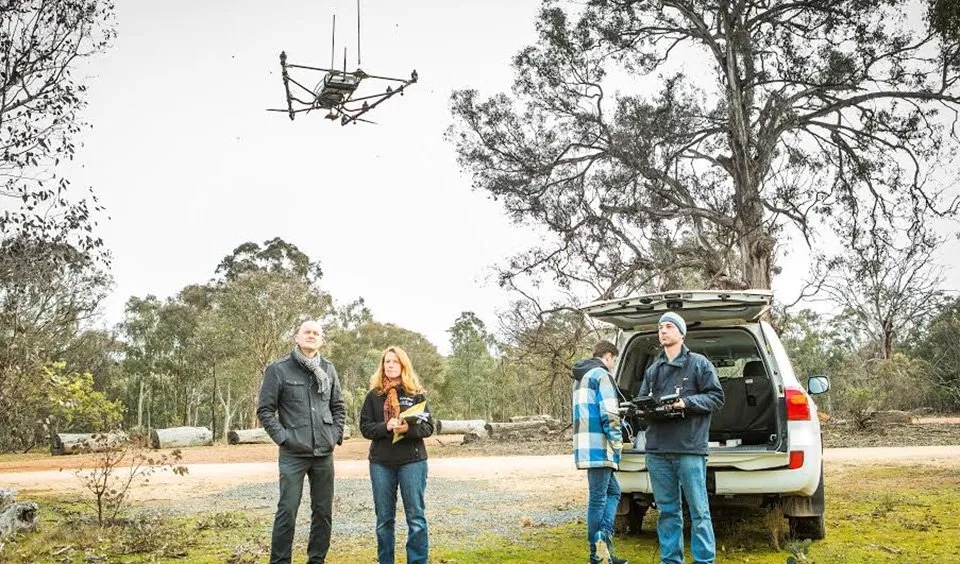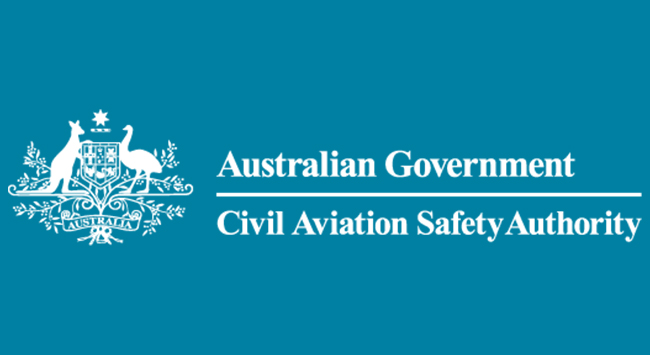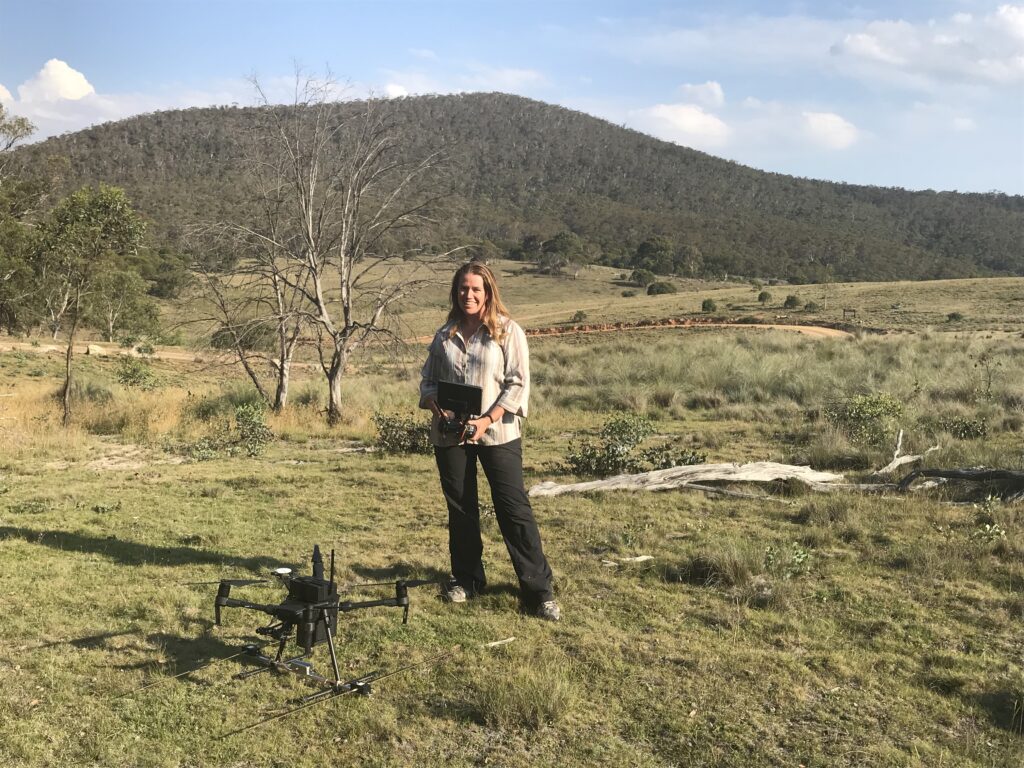
Insights
Drone Pilot Stories with Dr Debbie Debbie Saunders
Part 1
For over 20 years, Dr Debbie Saunders has worked as an ecologist and studied the movements of small migratory birds. Frustrated by the limitations of radio-tracking manually, Dr Saunders was inspired to develop a practical solution with wide-ranging applicability. Wildlife Drones is now an award-winning start-up that is currently working with a range of people across Australia, the United States and abroad to track the movements of some of the world’s most endangered species.
What made you decide to get your drone pilot licence?
I decided to obtain my drone private licence to gain a thorough understanding of our technology and also to learn how to use it effectively when flying a drone. When we were first developing our technology, we engaged Drone Pilots to do the flying. But once our technology was functional and commercially available, I really just had to dive in and learn how to do it myself. I pursued not only a pilot’s licence but also obtained an operator certificate, ensuring our readiness for commercial operations. This allowed us to conduct essential flights for testing our technology and providing animal tracking services to our clients whenever necessary.

What specific qualifications did I need?
First, I had to acquire a remote pilot licence through the Civil Aviation Safety Authority (CASA), the government body responsible for regulating aviation safety in Australia. This licence granted me the ability to operate remotely piloted aircraft. However, to engage in commercial or business activities, I also needed to obtain my remote operator certificate.

What was the training experience like?
Well, I had never flown a drone or a hobby aircraft so it was a completely new experience for me. I was a bit daunted but once I took to the skies I found that it was actually really easy! Drones have advanced a lot and are highly responsive to commands. They essentially wait for you to tell them what to do.
Of course, it’s not always this simple under challenging conditions or in certain situations, but they are capable of a lot! I really enjoyed the whole experience of the training and felt like it was very empowering in fact. Although I was nervous at first, I gained a lot of confidence while flying but I still needed to practice. I then purchased a small drone so that I could go out and practice flying locally whenever I needed, allowing me to hone the skills I acquired during the training course. The training involved both theory and practical flying of the drones. Everything was provided in the classes and it was great to have an expert on hand to ask questions. The course was comprehensive but also covered a lot of content that wasn’t directly relevant to drones, more so for getting a piloted aircraft licence. Since I’ve done my drone pilot training this has changed now.
How long does it take to become a drone pilot?
You can get your Drone Pilot licence within just 5 days. But to become actually good at it it takes a long time. For certain drone operations like thermal imaging, it can take years to become competent and you need to acquire a specific skill set due to the very challenging conditions of flying at night and flying in forested environments. For other applications, such as visual surveys or radio tracking, it really just comes down to practice. You need to get out there and fly as often as you can.
You definitely don’t need to be an expert upfront but rather give it a try and learn how to get the most out of your skillset. Flying a drone definitely gives you a different perspective on the world.
Now that you have gained your remote pilot licence, what’s next?
Once I obtained my licence, it expanded my capabilities to develop our radio-tracking payload system, as I gained the ability to fly whenever necessary. With each new attachment or feature, I could easily conduct test flights in my local area, enabling rapid technological advancements.
At first, I attended some remotely piloted aircraft clubs and tried flying at those locations. These clubs had pre-approved airspace and permitted flying activities. But given that my involvement was business-related and time-sensitive, I decided to explore alternative locations that offered both legal flying opportunities and the flexibility to suit my schedule.
What drone do you fly mostly? What do you like or dislike?
When it comes to the drones I operate, I typically fly the DJI Matrice 210 because we built the first attachment for our technology to suit this drone; but I also fly a smaller DJI Phantom drone. We now have a fleet of matrice drones for our technology as well as a Freefly Systems Astro, which I’m looking forward to flying more often in the future.
The aspect of flying that I appreciate the most is the unique perspective it offers on the world, particularly on the natural world. Flying alters the way data is captured compared to the ground-based collection, thereby influencing the insights derived from the data. I also really love the ability to deploy a radio receiver in the air and maximise the chances of detecting signals in locations where ground-based reception is limited. This was, of course, the initial application for which I started using drones. Prior to this, I had never done any visual work with drones; I immediately delved into radio tracking, which constituted the majority of my work for several years. However, I also enjoy experimenting with aerial photography, utilising a camera to capture imagery when given the opportunity.
I’ve gained a lot of freedom by getting my operator’s certificate as well as my pilot’s licence since it gives me a lot more access to areas really easily that wouldn’t otherwise be possible. So now instead of grabbing my binoculars for fieldwork, I grab boxes full of batteries and equipment so I can fly for as long as possible!

Stay tuned for Part 2 of Dr Debbie Saunders’ Drone Pilot Story!
In the next part, Dr Debbie Saunders reveals what drone conservation projects she works on and her most memorable flight experience!
Want to learn more about becoming a Drone Pilot in Australia?
The training program we provide covers various aspects of drone flying, from the basics to the advanced deployment of our technology. Partnering with Aviassist, an award-winning drone company, we ensure that participants receive high-quality instruction and gain the necessary skills to become qualified pilots. The training courses not only focus on flying techniques but also highlight the benefits of Wildlife Drones’ innovative technology, giving pilots a competitive edge in the industry.
Follow this link.

